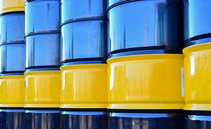Analyzing the Russian economy is a real puzzle. Here’s what the latest data shows.

In Russia, in the two-year period 2021-2023, the per capita consumption of citizens increased by more than 20%. What is happening in the shadow of the Kremlin?
On the surface we see a booming economy, with many people able to spend and splurge, driving up prices. Deep down, however, there is an "overheated system", growing but mainly driven by public spending in times of war, as well as by the defense sector. The data that catch the eye are, however, comforting for Moscow, given that in 2023 the country recorded GDP growth of +3.6% and an unemployment rate at a historic low of 2.6 %.
At the same time, the labor crisis - in some sectors, there is still a lack of staff - has caused wages to rise, contributing to high inflation which exceeded 9% on an annual basis, well above of the official target of 4%. It is no coincidence that the Russian central bank has raised the alarm, once again, regarding the reported overheating of the economy, increasing rates from 16% to 18% in an attempt to curb the increase in prices.
“GDP growth rates remained high in the first and second quarters of 2024 while inflation was accelerating. This suggests that the overheating of the economy remained considerable,” Elvira Nabiullina, governor of the Russian central bank, clearly explained during her rate increase announcement.
The paradoxes of the Russian economy
Analyzing the Russian economy in this period is a real puzzle. In any case, despite the heavy sanctions suffered due to the offensive in Ukraine, Moscow’s system has not yet imploded and indeed appears to be resilient, supported by state spending to fuel military activities and pump out subsidies.
Overall, according to the Financial Times, per capita consumption increased by more than 20% from 2021 to 2023, with tourism expenditure rising by over 90%. Spending on culture, hotel, transportation services and personal services also increased. Far from imminent collapse: we’ve reached the point where a Moscow resident told the FT that his neighbor had shown him photos of a domestic lion.
“Everyone who belongs to the upper middle class enjoys a really good life,” explained Sergei Ishkov, a Moscow investor and entrepreneur. “Consumption is booming due to a combination of massive budget spending and labor shortages, leading to strong pressure on wages,” said Bartosz Sawicki, market analyst at fintech Conotoxia.
Be careful though, because military spending, equal to around 7% of GDP, would be leading to serious macroeconomic imbalances. Meanwhile, Nabiullina said the Russian central bank could raise rates again if necessary.
leggi anche
Who is buying Russian oil?

What to expect for the future
According to Russian estimates, the national GDP should grow around 3.5-4% during 2024. However, in 2025 it could slow down to 0.5-1.5% growth on an annual basis. The Russian central bank has however reassured that it will keep its key interest rate high for as long as necessary to cool inflation. If necessary, it could even impose further rate hikes to reduce economic risks.
“Reserves of labor and production capacity have been almost exhausted,” Nabiullina said. “The shortage of these resources could cause a situation where economic growth slows despite any attempt to increase demand,” he added.
As if that weren’t enough, any attempt to stimulate demand would only fuel inflation even more. This could create "a stagflation scenario that could only be stopped through a deep recession", Nabiullina herself warned, explaining the sharp increase in rates by the central bank. The next central bank meeting will be held on September 13.
Original article published on Money.it Italy 2024-08-06 07:00:00. Original title: Cosa succede in Russia e perché il pil pro capite è aumentato di oltre il 20% nell’ultimo biennio




